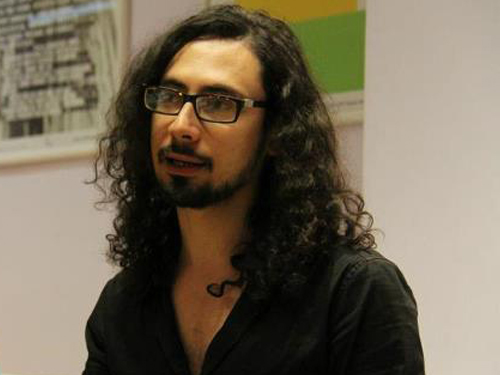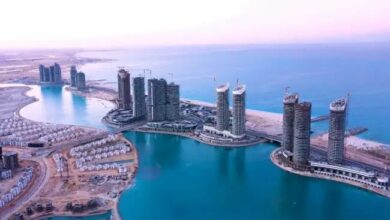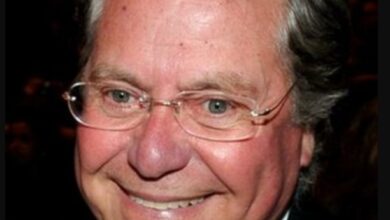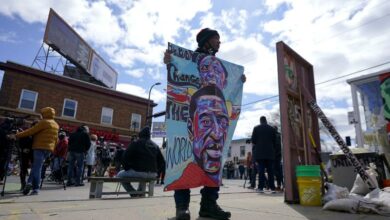
Visitors to next month’s TransDance festival may find themselves challenged by its performances, most of which are either silent or consist purely of sound.
Another radical factor is the festival’s ambitious call for artists, which pulls no punches. It references the hegemony of the Culture Ministry, Nasserism, and “the petrodollar Wahabist Islamic take over.” Claiming the body “as a document, as a site of memory,” it suggests that “dance in Egypt now is one of the ‘most political’ forms of artistic practice … regardless of the materiality and aesthetics of the score produced.”
While the complete line up is not yet finalized, one participant will be Mirette Mechail, founder of No Point Perspective, whose work in progress “Not For Everybody,” which used non-dancers as well as professionals, wowed audiences at “Contemporary Dance Night 2” this week.
German performer Peter Stamer will stage a series of shows in taxis for random passengers, while architect Bettina Vismann will lead performative walks on predetermined trajectories through Cairo that passersby will be able to join.
The festival, now in its fifth edition, was founded in Cairo by Adham Hafez, who is joined by two of his long-term collaborators, “dramaturge” Ismail Fayed and project coordinator and researcher Ahmad Moez. Its focus on workshops and discussions as well as performances is part of Hafez’s aim “to get people to think about dance differently.”
Indeed, what may initially sound intimidating or gimmicky — dance with either no music or no visuals — turns out to be part of an effort to open dance up; questions posed to make the discipline more transparent. Like the spirited call for artists, these restrictions reflect the idealism of the festival’s young founder.
Hafez, a well-established dancer trained in Cairo and Amsterdam whose own hybrid practice is closely related to contemporary art, says “I personally admire dancers who challenge fixed aesthetics about the body … keeping people feeling included in the dance, and that dance is possible and dance is for everyone. Dance should not be treated as a selective elitist practice for youthful bodies that look athletic, the way ballet establishes such discourse. Dance should always be there, because dance is always there. We move to rhythm before we learn how to speak, when we’re first born.”
It’s certainly true that, as with various other disciplines, a lot of the most interesting contemporary dance is that which explores the edges of what it can be, and the boundaries it has with everyday life.
Fayed explains that the specifics of TransDance 2012 stem from observation of and discussion about dance. “In general contemporary dance uses contemporary music, it is tied to this kind of sound,” he points out. Questions about the use of music posed at the 2 B Continued festival in Cairo in 2011, which involved a contingent from the Amsterdam School of the Arts, revealed that many participants were indifferent to sound, or saw it as a complementary rather than intrinsic element of dance.
This led them to wonder, Fayed says, whether contemporary dance is “timed movement that follows a certain rhythm, or is music superimposed on it? Is music an afterthought, or is it completely impossible to conceive of dance without sound? Will audiences be able to perceive the movement in the same way?” Hafez adds the rather more singular question: “Is movement a documentation of sound somehow?”
But how do these types of dance relate to the fierce politics referenced in the call for artists? Both Hafez and Fayed respond in quite general terms. The former answers with questions about what the political is: “Does an artist now feel the necessity to frame the work as ‘political?’ Is it because of the revolution that every artist thinks they are obliged to create political work? And then by ‘political’ what do we mean? Is it a ‘dance-remake’ of Al-Jazeera news? Or is it perhaps discovering and articulating political potential that is inherent to dance and movement, especially in a context like Egypt or the Arab world? Is moving, in and of itself, political?”
Fayed likewise says, “It is political to ask people in contemporary dance to question their own practice.” But in relation to the disembodied, purely audio performances — which will be presented as sound installations and broadcast on the radio — he mentions censorship and religion: “What if someone wants to dance but feels it’s haram — is it ok to propose a series of movements?” But he stresses that they didn’t choose the “radio dance” format because of censorship but just as a way of “thinking out loud.”
The response to the call “was not as much as I’d have liked,” admits Fayed, but the interest was both international and local. Hafez says that they selected “artists who think of the context of what they produce just as much as they think of what they produce” — those concerned with “how this shapes the work.”
He explains the festival’s name as follows: “Transdisciplinary, transcultural, trans-spatial or temporal, the festival highlights the act of crossing over and into something, and what this does to this practice or the other.”
Previous editions have presented the work of visual artists such as Doaa Aly, Hassan Khan, Neven Korda and others who Hafez says “work with media that intersect.” Part of this year’s program also incorporates visual art practices. Doaa Aly’s new dance film work will be featured, for example, as well as a documentary on classical Indian dance.
Hafez says the fact that some performances are taking place in public space will make the festival’s audience diverse. However Fayed suggests that it is difficult to appreciate contemporary dance without some knowledge of it, saying “contemporary dance is bizarre for Egyptians in general.” His “hoped-for segment” is aged between 15 and 30, and he says that virtual interest — on Facebook, Twitter, even LinkedIn — is as important as an actual audience, creating an atmosphere that is a step toward other initiatives, clubs or theaters being set up.
The organizers are inviting various international “dance thinkers,” such as historian Ramsay Burt, and are “curious about what friction and discussion will happen and their responses to the kinds of questions the local public will raise,” Fayed says.
He describes dramaturgy as encompassing research, writing and conceptual development, taking on the role of “in-house critic, working with rather than against you.” His educational background is unrelated to performing arts — he says he was drawn to it through being surrounded by people connected to dance in Egypt, primarily in connection with the erstwhile Cairo Opera House Modern School for Dance.
He reckons that theater is more popular in Egypt because it has a longer history, but that since 1990 interest in dance and the number of practitioners have been increasing. In the past few years, he says, there has been a surge. From the number of independent events — including Contemporary Dance Night, 2 B Continued, and last year’s Force Majeure at the Townhouse Gallery, also produced by Hafez’s HaRaKa company — this seems to be true. Fayed says a lot of people are making connections between contemporary dance and theater, which is opening it up.
Comparing this edition of the festival to the first, Hafez says, “What has changed is the audiences, as the festival starts to take place in different venues and the network of institutions that support the festival grew with the years, creating a diverse and international edition this year.”
The British Council, French Cultural Center and Goethe Institute are confirmed partners and the main venues for the festival, which will take place from 1–18 October. There will be nine performances as well as various other events, and they will be “mostly free” according to Hafez.
It is yet to be seen how directly TransDance 2012 will engage with all the issues it brings up in its call for artists, including Islam, the politicization of bodies, the Culture Ministry and how a government can regulate dance. And the success of the restrictions it has imposed depends on what the participants will do with them. But all these factors suggest that whatever happens, it will be anything but bland.




